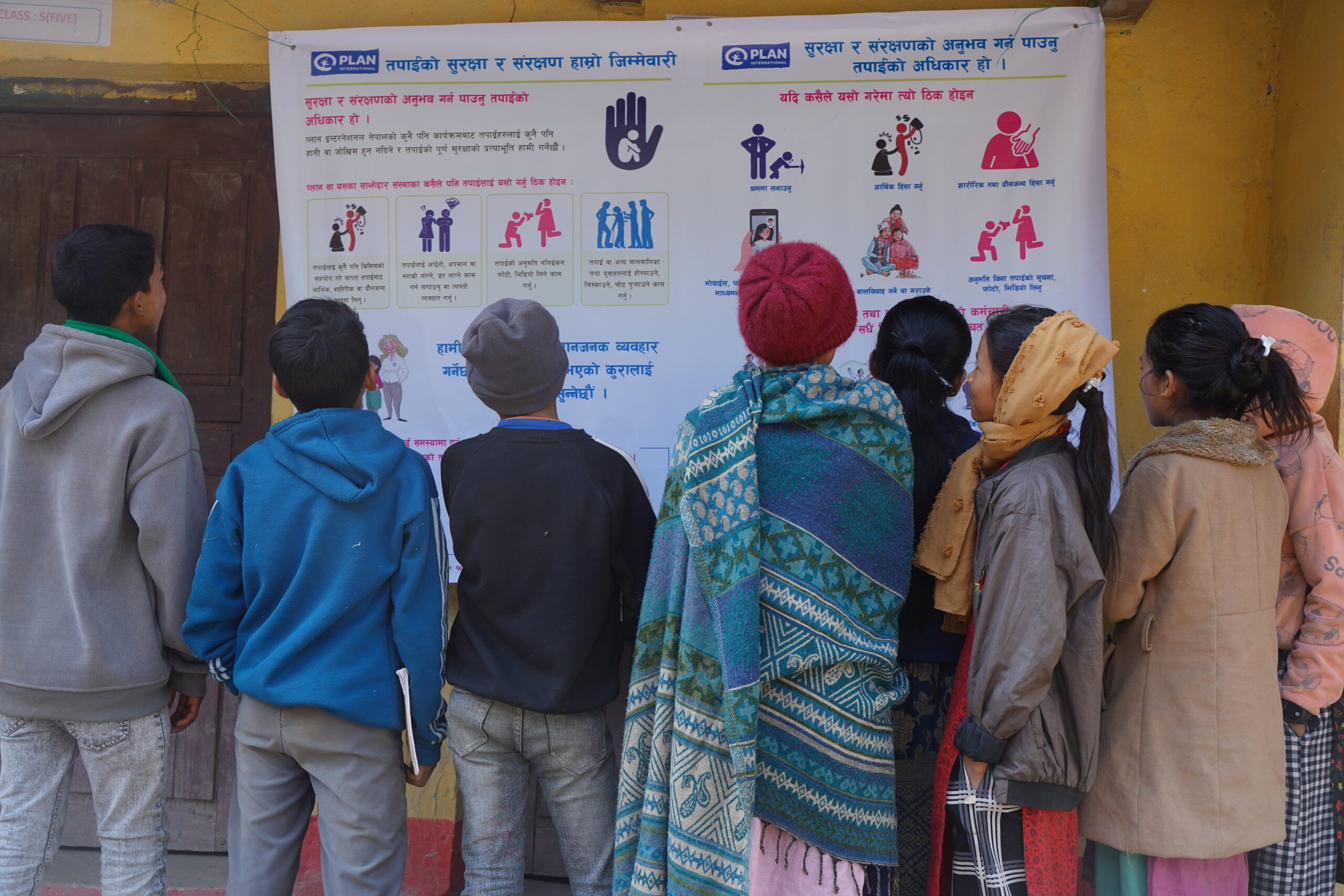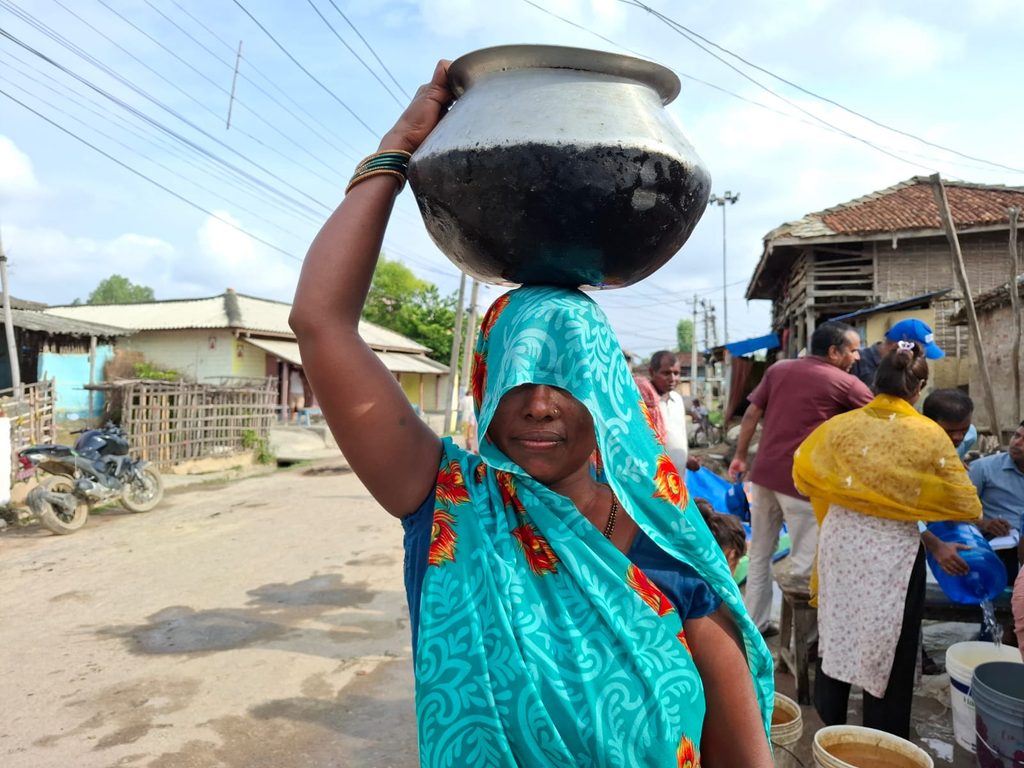Leaving no one behind in crisis: The case for gender in emergency response
5 August 2025Emergencies don’t affect everyone equally. Girls, women, and marginalised groups often face greater risks and barriers. At Plan International Nepal, we are committed to ensuring that our emergency response is inclusive to all genders. In this blog, Gita Bidari, Gender Equality and Social Inclusion Technical Advisor, shares how we are putting this commitment into action.

When disaster strikes, whether through pandemics, conflict, or climate-induced crises, it does not affect everyone equally. Emergencies magnify existing inequalities. Those who are already poor, marginalised, or socially excluded, particularly girls, women (especially pregnant and lactating), persons with disabilities, LGBTQIA+ individuals, ethnic minorities, and the elderly, are often pushed further to the margins.
At Plan International Nepal, we believe that caring for everyone’s different needs during an emergency is not just the right thing to do, it’s really important. It saves lives, preserves dignity, and helps build communities that are more resilient and just.
Why gender matters in humanitarian response
Globally, humanitarian actors, including Plan International, recognise that emergencies both deepen and challenge gender-based inequalities. The Inter-Agency Standing Committee (IASC) gender policy and the Minimum Standards for Gender and Inclusion in Emergencies call for taking action to help and protect those who need it most.
Plan International’s Global Strategy 2022–2027, “All Girls Standing Strong“, places a clear emphasis on gender-transformative approaches in both development and humanitarian settings. It urges targeted action to ensure that adolescent girls in crisis contexts can learn, lead, decide, and thrive.
In Nepal, vulnerability is deeply layered. Harmful gender norms, caste systems, restricted mobility, and barriers to accessing essential services such as education, health, and protection mean that emergency response can unintentionally exclude those most in need. Making things fair for everyone means we have to examine and address unfairness in families, neighborhoods, organisations, and the way decisions are made.
Our inclusive emergency response
When we respond to, or are preparing to respond to, emergencies, gender equality and social inclusion (GESI) is included at every stage. To guide how we make sure we have fully included GESI, we follow several guidelines, including our internal resources like: the Ready to Respond plan, GESIA action plan (2024-2028), Country Strategy (2023–2028), and the Global Emergency Response Manual and Operational Guidelines
Our approach is rooted in human rights. It uplifts the agency of children and young people, harnesses digital innovation, strengthens systems, and promotes environmental sustainability.
Putting inclusion in practice
1. Rapid Gender Assessments (RGA)
RGAs quickly show how crises affect people differently, so support is fair. We use it to meet the specific needs of girls and young women.
After the 2023 Jajarkot Earthquake, Plan International Nepal worked with partners to conduct an RGA. The RGA disaggregated data by sex, age, disability, and gender identity. It identified specific needs and barriers faced by adolescent girls, pregnant and lactating women, persons with disabilities, the elderly, and LGBTQIA+ individuals, ensuring our recovery efforts were inclusive and rights-based.
2. Rapid Gender and Youth Analysis (RGYA)
RGYAs explore how age and gender affect people in emergencies. We use it to design programmes that help and support young people, especially girls.
As part of the Youth Economic Empowerment for Development project, we piloted an RGYA to identify gendered needs and risks in disaster-prone areas. This tool enables us to plan in advance for floods, landslides, droughts, and other crises, ensuring interventions reach young people equally and effectively.
3. Tailored relief packages
Our Ready to Respond Plan ensures that relief items such as dignity kits, non-food item kits, and child kits are pre-positioned and distributed within 72 hours of an emergency. For instance, following the Jajarkot earthquake and during the 2024 floods in Madhesh and Bagmati provinces, Plan International Nepal distributed kits using a Cash and Voucher Assistance modality prioritising adolescent girls, persons with disabilities, and female-headed households.
We are now planning to pre-position emergency kits tailored for the LGBTQIA+ community, addressing gaps often overlooked in traditional humanitarian relief. During the recent drought in Madhesh, we partnered with local authorities to provide safe drinking water to over 1,000 households, supplying 60 litres per day for 10 days in our sponsorship areas.
4. Safe spaces, safeguarding, and protection
Plan International upholds strong safeguarding and prevention of sexual harassment, exploitation and abuse (PSHEA) mechanisms across all programmes. Safeguarding orientations are mandatory for staff, partners, vendors, and service providers.
We ensure that emergency distribution sites are safe and inclusive, especially for women, girls, persons with disabilities, and LGBTQIA+ individuals. Our feedback and complaints mechanisms are survivor-centred, confidential, and accessible, reinforcing our zero-tolerance approach to abuse.

Clean drinking water to fight against drought in Madhesh
Plan International Nepal, with the Social Development and Research Centre and local authorities, has begun distributing clean drinking water to drought-affected families in Madhesh.
Locally led partnerships for resilient communities
We work closely with the National Disaster Risk Reduction and Management Authority, District Disaster Management Committees, local governments, and community networks. Through the Local Disaster and Climate Resilience Plans and grassroots user groups, we ensure that all our emergency responses are effective by carefully designing them to include everyone and ensure that everyone in a community is able to participate.
We also invest in helping communities learn skills that they can use to continue the work in their community independently.
Navigating barriers to inclusion in emergencies
Despite progress, critical challenges remain:
- Many rapid needs assessments do not provide data by gender, disability, or sexual identity, leaving invisible those most in need.
- Harmful social norms and stigma still prevent women, girls, and LGBTQIA+ individuals from accessing support.
- Physical, digital, and attitudinal barriers persist, particularly in remote regions, limiting access to information, resources, and protection services.
- Emergency programmes that include everyone fairly often don’t get enough money or support, especially in local areas. There are also not enough trained people to help.
Five key priorities
To deepen our commitment to inclusive humanitarian response, we must:
- Strengthen frontline capacity in GESI, disability inclusion, and safeguarding.
- Advocate for inclusive policies and budgets at the municipal level.
- Enhance coordination with provincial and municipal governments.
- Promote community accountability through mechanisms like the Young Citizen Scorecard and inclusive feedback systems.
- Use the Gender and Age Marker tool that helps to consider the different needs of people of all genders and ages, making sure everyone gets fair support.
Inclusion is personal: A reflection
As a feminist and GESI advisor, my commitment is personal. I have listened to girls who are too afraid to speak, mothers excluded from decisions, and youth leaders rising from crisis.
Inclusion, for me, is not a checklist. It is a human responsibility. It is about restoring not just homes, but hope. It is about ensuring that a girl who has survived a flood or a person with a disability displaced by conflict feels seen, heard, and protected. GESI is not charity, it is justice.
Emergencies reveal who we are. They expose the fault lines of injustice and inequality. At Plan International Nepal, we believe a truly effective humanitarian response is one where no one is left behind.
As climate disasters, pandemics, and conflicts continue to rise, integrating GESI is not just a recommendation; it is a life-saving imperative. Our work will continue, because dignity, justice, and equality must never be paused, not even in crisis.


